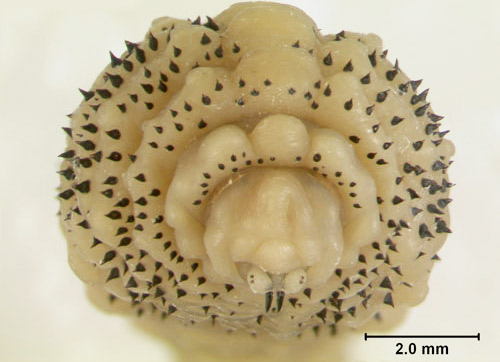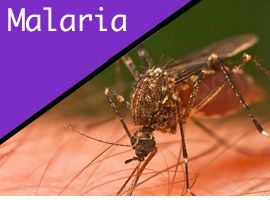What if I told you that there exists a fly – the botfly – that captures mosquitoes, ticks and certain other flies, holds them hostage long enough to attach their eggs to them and then sends them on their way. The mosquito, tick or fly then lands on your arm, bites you and inadvertently deposits the eggs.
The eggs hatch, and the larvae burrow into your skin, eventually reaching the subcutaneous layers. At this point, the larvae develop over the course of eight weeks before emerging from your skin. Think I’m joking? No, folks. Sadly, this thing is real.
Psyche!!! Don’t worry, the above photo is a fungal infection. It is improperly labeled as a botfly infestation on multiple websites. (photo source: reddit)
This is a botfly. It lives in the Americas, from southern Mexico down to northern Argentina, Chile and Uruguay. They are relatively rare – phew! – in these places, but they do tend to have more concentrated populations in warm, damp, humid areas.
How can you prevent a botfly infestation
There are a few things you can do to protect yourself from a botfly infestation:
- Wear clothing that keeps you covered – the more skin you have exposed, the more likely you are to have an egg land in the wrong place. Wear pants and long sleeves as much as possible, especially when mosquitoes are active, as they can carry the botfly’s eggs. You might want to wear a hat, too (see the video below).
- Use insect repellant – See our article on this topic for specific recommendations.
- Avoid dense brush and high grass – ticks can also carry botfly eggs. Avoiding ticks can help you avoid botfly larvae.
Why should you wear a hat? Here’s why:
That video has been viewed over 7 million times. Yikes.
What do you do if you have a botfly infestation?
Here’s the good news: botfly larvae do not carry disease, and there is a very low risk of serious complications or death. There is a risk of infection, but some basic antibiotics can take care of that.
Here’s the bad news: this thing (see picture) is growing inside of you, and eventually it has to burrow its way out. And there is no pill or cream that you can take that will dissolve it without leaving a trace. They need to come out the same way they came in (only, they will be about 10 times their original size for the exit trip).
You see those little spines? Yeah, those hurt. (photo credit)
If the botfly larvae have set up shop in the subcutaneous layers of your skin, you have a few options. You could go to the hospital and have the larvae surgically removed. Alternatively, you could put petroleum jelly over the welt, suffocate the larvae, and then remove the organism with tweezers (it will come to the surface).
Finally, you could just let the larvae do their thing. You know, grow inside of you for eight weeks and then burrow out of you on their own time. Either way, you should see a doctor so that they can prescribe you the appropriate antibiotics.
Botfly infections are rare. You would have to be an unlucky traveler (or a traveler that is spending a lot of time in the Amazon, like these people). Any experience with botflys among our readers? Please share all the gruesome details in the comments below. Want to read more on similarly terrifying organisms? We got you covered here.















{ 5 comments… add one }